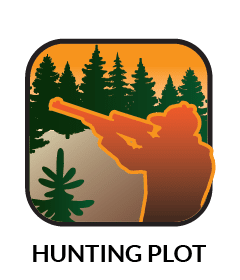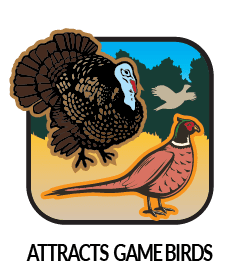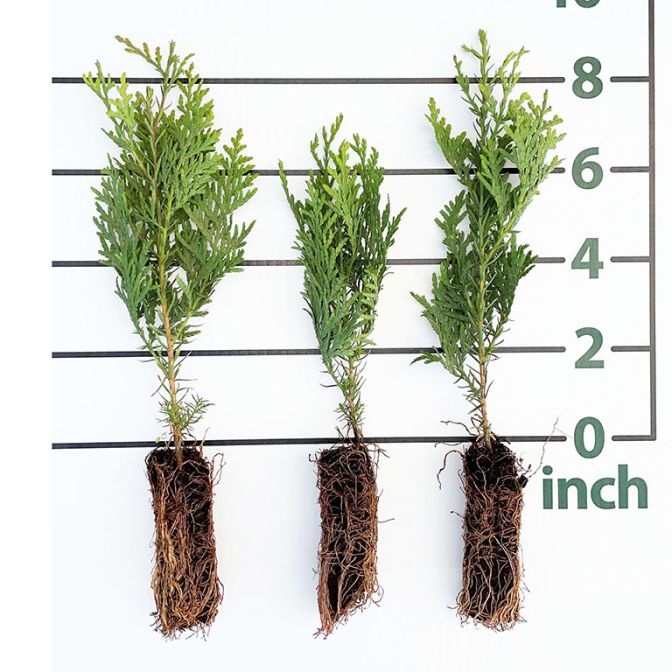Northern White Cedar Forestry Plugs
Plant Type: Evergreen plug
Zones: 2-9
Soil Type: Clay, Loamy & Sandy Soils
Site Selection: Full Sun, Partial Sun
Mature Height & Width: 30-40' Height and 10-12' Spread
Growth Rate: Slow - 8-12" per year once established
Moisture Requirements: Average to wet soils




Northern White Cedar Forestry Plugs
Thuja occidentalis - American Arborvitae
Sold only by the full box
The Northern White Cedar is often called the American Arborvitae. This cedar has flattened branches with green, scaly, fan-like foliage. This selection displays good cold hardiness and heat tolerance and is very popular for landscape, hedge rows, and wildlife plantings. The Northern White Cedar is adaptable to most soil types and is somewhat shade tolerant. This cedar will grow in average moisture conditions, but will also do well in those wetter or swampy areas of your property.
Now you have access to the same trees planted by the giant timber companies, tree farms and many forestry agencies! The roots of our P1 size trees are surrounded by a plug of soil which is 3.3 cubic inches while our P2 trees have a plug of soil 4.9 cubic inches in volume. Our P3 Super Plug trees boast a soil plug volume of a whopping 15.3 cubic inches, over 3X the size of its P2 counterpart! The biomass of the trees also increases substantially with each plug size increment. This includes the soil plug size, root system and stem diameter.
Specs for the soil plug surrounding the roots:
P1 size | 1.1” Diameter | 3.74” Depth | 3.7 cubic inch soil plug
P2 size | 1.24” Diameter | 4.33” Depth | 4.9 cubic inch soil plug
P3 size Super Plug | 2” Diameter | 5.96” Depth | 15.3 cubic inch soil plug
The Northern White Cedar is sometimes also known as the American Arborvitae, Eastern Arborvitae, Eastern White Cedar, Swamp Cedar, or the Atlantic Red Cedar.
The Northern White Cedar is a beautiful evergreen. Drying winter winds on an exposed site could damage the Northern White Cedar, causing it to turn brown. In areas with routine hot and dry spells, some shade is important for this tree to thrive. While this tree will tolerate various soil types, it will thrive on fertile soil that is constantly moist but well drained.
Fun fact: The oldest Northern White Cedar is 1,650 years old and located in Ontario, Canada.
Common uses for the Northern White Cedar:
- Privacy screen or living fence
- Year round color
- Windbreaks
- Shelter for many types of birds
The Northern White Cedar is a good choice for wildlife plantings. Birds love its dense habit for cover and protection. White-tailed deer and Snowshoe Hare use stands of cedar for shelter, and browsing especially during severe winters. Many types of wildlife enjoy this selection including Red Squirrel, Porcupine, Warblers and the Pileated Woodpecker.







